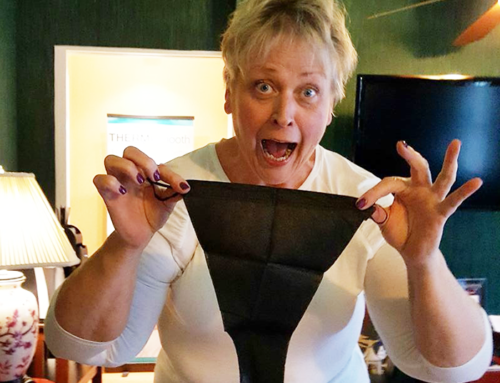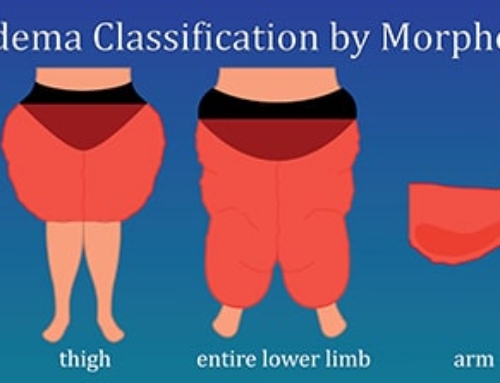By Denise Bennett
 You’ve scheduled your appointment for liposuction for Lipedema and now you are wondering what to expect afterwards. I’ve been there. Of course, everyone is different, and you know this, but it seems we are all looking for a single experience during recovery. It doesn’t work that way. After surgery, any surgery, the recovery can be remarkably different from one person to another. So, let’s talk about some of the things that seem to be common among all of us; the experiences that are commonly shared by women who have liposuction for Lipedema.
You’ve scheduled your appointment for liposuction for Lipedema and now you are wondering what to expect afterwards. I’ve been there. Of course, everyone is different, and you know this, but it seems we are all looking for a single experience during recovery. It doesn’t work that way. After surgery, any surgery, the recovery can be remarkably different from one person to another. So, let’s talk about some of the things that seem to be common among all of us; the experiences that are commonly shared by women who have liposuction for Lipedema.
These shared experiences seem not to be dependent upon such things as surgeon, type of liposuction, volume of fluid/fat removed, type of anesthesia used, overall general health prior to surgery, and pre/post hemoglobin levels. All these issues will impact your recovery significantly and will be discussed in another blog post.
After your first procedure under local anesthesia, you can expect to feel great. Most women walk to their vehicle with little assistance. You may think that you are perfectly fine and capable of driving. You are not. I thought I was capable, so make sure that your spouse, caregiver or friend knows you well enough to tell you no.
On the day of surgery, and for those first 24 hours post-op, you can expect to sleep a lot. Make sure your caregiver keeps you well hydrated. Water is essential in replacing the volume of fluids lost during surgery and in flushing the anesthesia from your system. Drink plenty of water. Some women have a reduced appetite. Some women are incredibly hungry. Eat healthily. This is not the time to be focused on weight loss. You need to focus on giving your body the nutrition it requires to heal and restore your hemoglobin back to your normal level. Rest. Walk. Heal.
The first 24 hours after surgery you can expect leakage from the surgical incisions. Everyone’s leakage is different. You may feel like a leaky faucet or you may experience significant leakage, soaking your bandages and wraps, clothing and protective bed coverings. Planning for the leakage is key to your recovery. None of us wish to spend our first night of recovery feeling soaked with pink-tinged fluids. Puppy pads, incontinence pads, plastic sheets or old towels, etc. are an essential part of your post-surgical survival kit. Some surgeons stitch the wounds, others do not. Whether or not your surgeon stitches or not will impact how much leakage you experience. My surgery was with Dr. Byrd, and she places one stitch in each wound, resulting in very little leakage for me. Don’t be alarmed if you have what seems like a lot of fluid draining or very little. Unless your bandages are soaked with dark red blood, the fluid loss is normal.
The next day, you may still feel groggy. This is normal. Others feel fine. They are not. Despite feeling great, you are still recovering and are in an “altered” state. Walk as much as is possible; not long distances, but often. Hourly seems to work well. After my first surgery, I felt fine, and walking was only challenging because of the compression wraps slipping or sticking together, and the croc-style shoes, bulky socks and bandages around my ankles. After my second surgery (3 days later) my hemoglobin was at a lower, yet normal/safe level, and when walking I experienced shortness of breath. This is important to know. A lowered hemoglobin means that your body is working harder to disperse oxygen, therefore shortness of breath, shivering, feeling cold, lightheadedness, etc. are all symptoms you may or may not experience. Be aware, take it easy, and be gentle with yourself.
In the following days, follow your doctor’s recommendations for taking your medications, supplements, fluid consumption and mild exercise. Many women experience nausea. I did. The first few hours in the morning were the roughest hours for me, not because of pain, but due to waves of nausea. As the days and weeks passed, this became less frequent. I found that just slowing myself down and giving it a chance to pass seemed to work best for me. Dr. Byrd prescribes a medication for nausea and I used it daily for the weeks following my surgeries. Swelling and bruising are the most commonly shared aspects of recovery. This is part of the healing process, and your physician may provide you with medications or supplements to help these symptoms.
There are many emotional side effects. For me, this was the most challenging aspect of the surgeries. I was relieved to be on the “other side” of the journey, but each day seemed to bring new feelings of both elation and anxiety. This is also normal. Try to discuss this with your husband, wife, friends or family. Their outside perspective is refreshingly honest while you are caught up in the emotional whirlpool. Let them steady your mind. For me, the turning point was eight days after my second surgery was completed. I was awash with emotions. My spouse said, “Denise, your legs! I’m going to take a picture of your beautiful legs and show you what I see.” And so she did. And I saw them. And my mind and heart rested easy.
Good luck on YOUR journey.
© 2018 Lipedema Surgery Center. All rights reserved.






